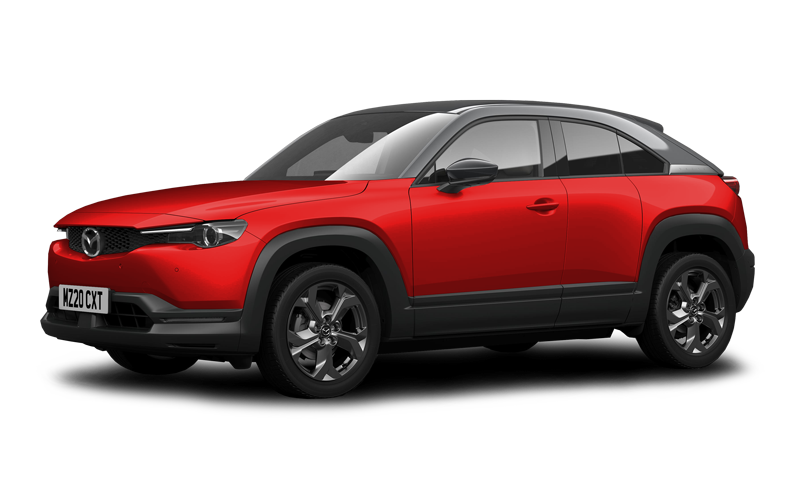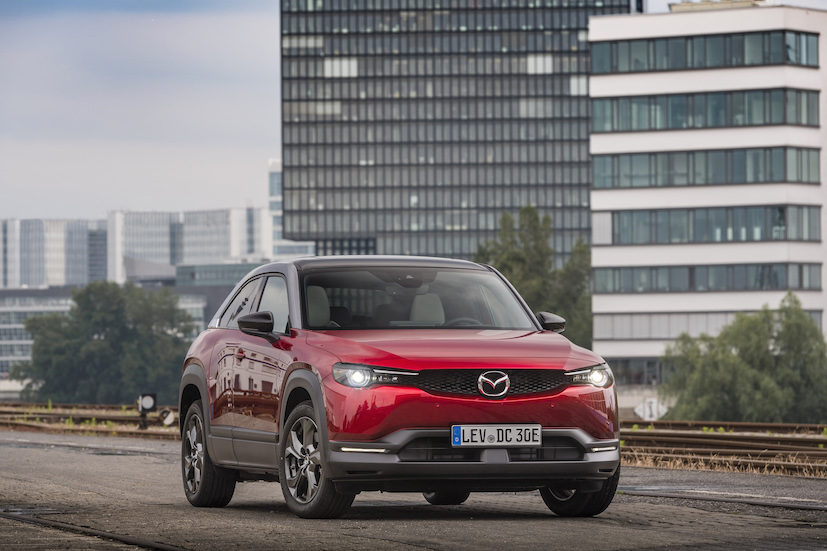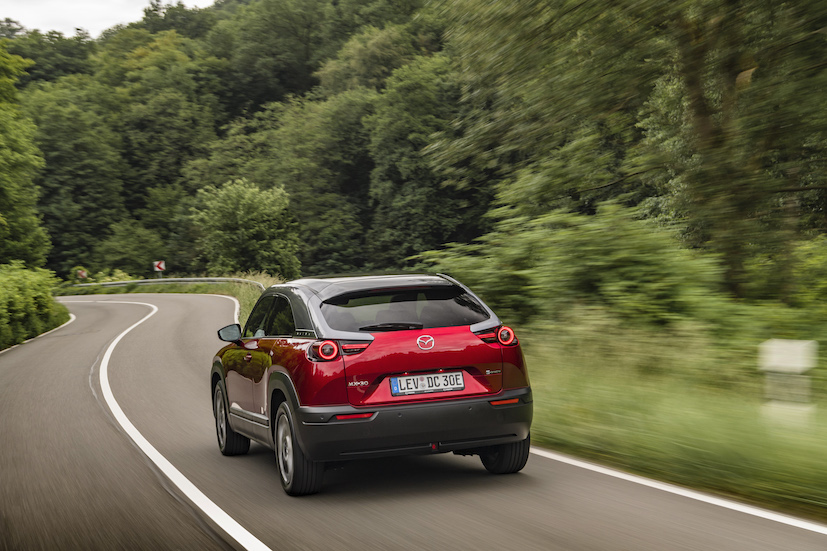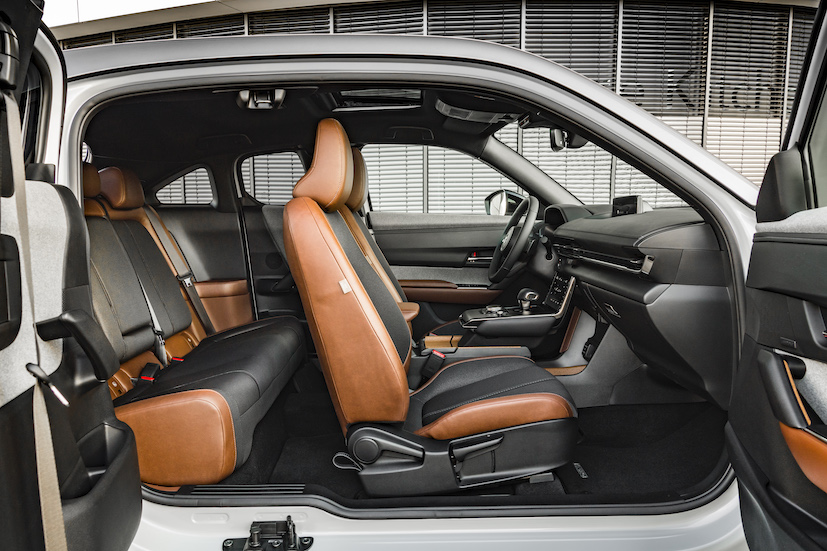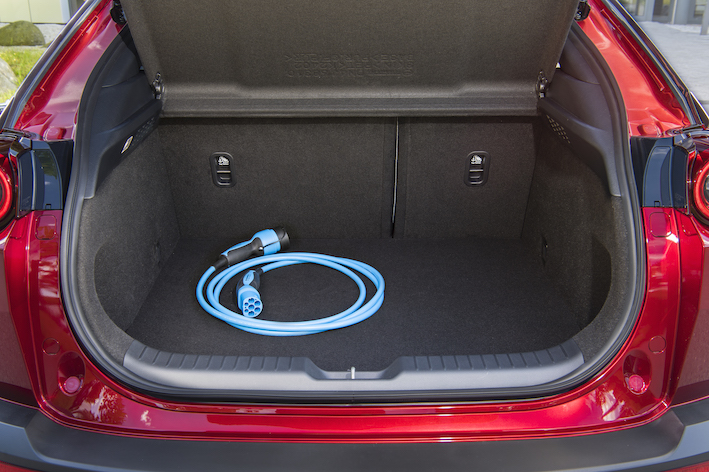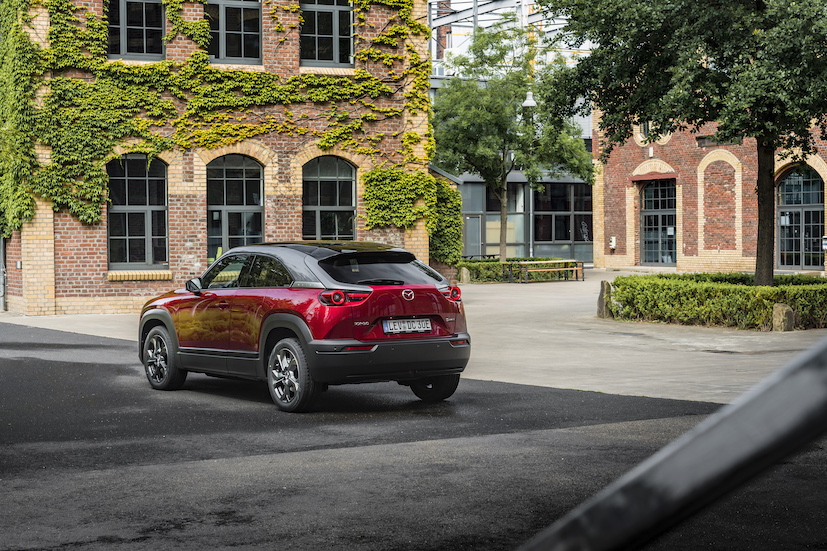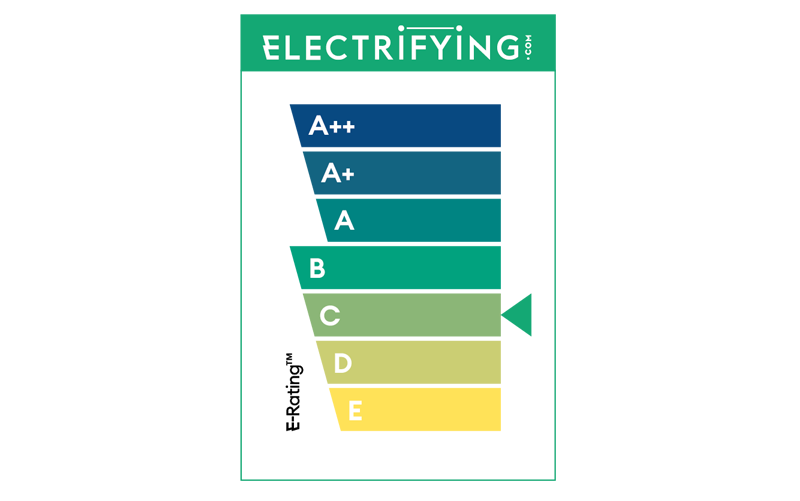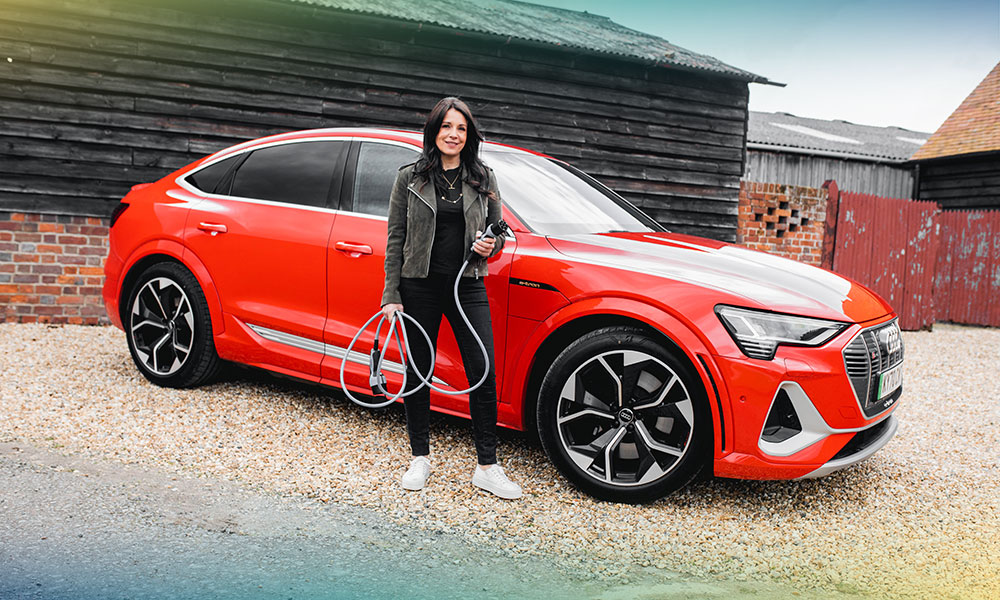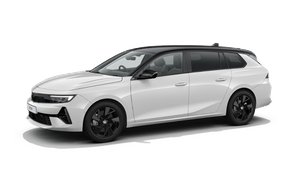In fact, while Japanese rivals from Toyota, Honda, Nissan and Mitsubishi have been building hybrids and electric cars for more than a decade, Mazda has resisted the current flow. But now, with the end of internal combustion engines looming and the imposition of heavy emissions taxes, Mazda is bowing to the trend. But it’s not going to go the usual way.
The MX-30, which starts from £28,995, looks striking for a start. Its most obvious rivals are the MINI Electric, Fiat 500e and the Honda e, both of which are thoroughly modern but have cutesy retro styling. The Mazda instead has a futuristic SUV-like look and pillarless doors, just like a BMW i3.
The other element the MX-30 shares with the MINI and Honda is a surprisingly small battery. At 35.5 kWh it is noticeably smaller than rivals such as the Corsa Electric's 45kWh. The cheaper MG ZS, which also shares a modern SUV shape, has a 72kWh battery and more than twice as much range.
This will inevitably cause a few raised eyebrows as it results in a range which is far below the average at 124 miles. Even the aged Renault Zoe will go twice as far between charges. But Mazda claims this is 'right sizing', representing plenty of range for the average motorist. It also means the car is comparatively inexpensive and light compared to some rivals.
But a more interesting trait brought by having a smaller battery is the driving experience. Because the MX-30 is lighter, it is also great fun to drive. It’s not a coincidence that the MX name is shared with Mazda’s famous roadster. Like the MX-5 though, Mazda’s electric car manages to be fun-to-drive without relying on outright power. This is not a fast car, with just 141bhp on offer.
The rest of the driving experience has also been tailored to suit enthusiastic petrol heads who might find the switch to electric difficult. The accelerator pedal doesn’t have the sometimes-harsh regenerative braking you’ll find from other electric cars and the MX-30 even generates an artificial engine sound so the driver gets a good sense of speed. It sounds an awful idea but is quite subtle in reality.
But like any sportscar, the MX-30 is compromised in its practicality. It looks distinctive and when both side doors are open it offers a good view into a nicely finished inside that is more reminiscent of a living room than a car. But due to the narrow rear doors, the access is poor. Where other electric models offer extra legroom due to clever packaging, the Mazda’s rear seats and headroom are going to cause complaints from adult passengers.
But at least they will get a good view of that cork trim. It – along with the rest of the MX-30 - is proof that Mazda is still bold enough to go its own way, even when out of its comfort zone and dealing with electric cars. We are glad they didn’t bottle it.












